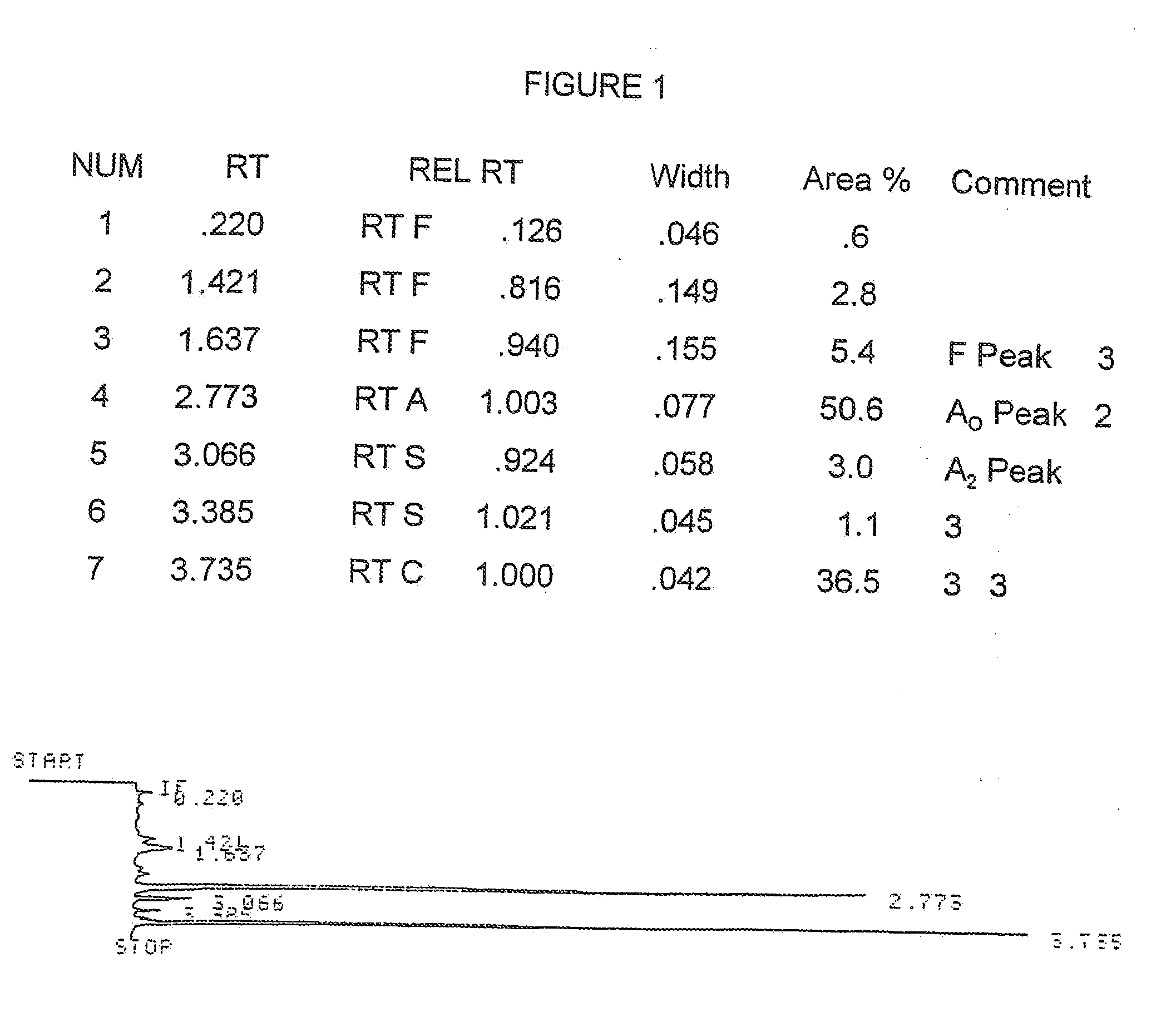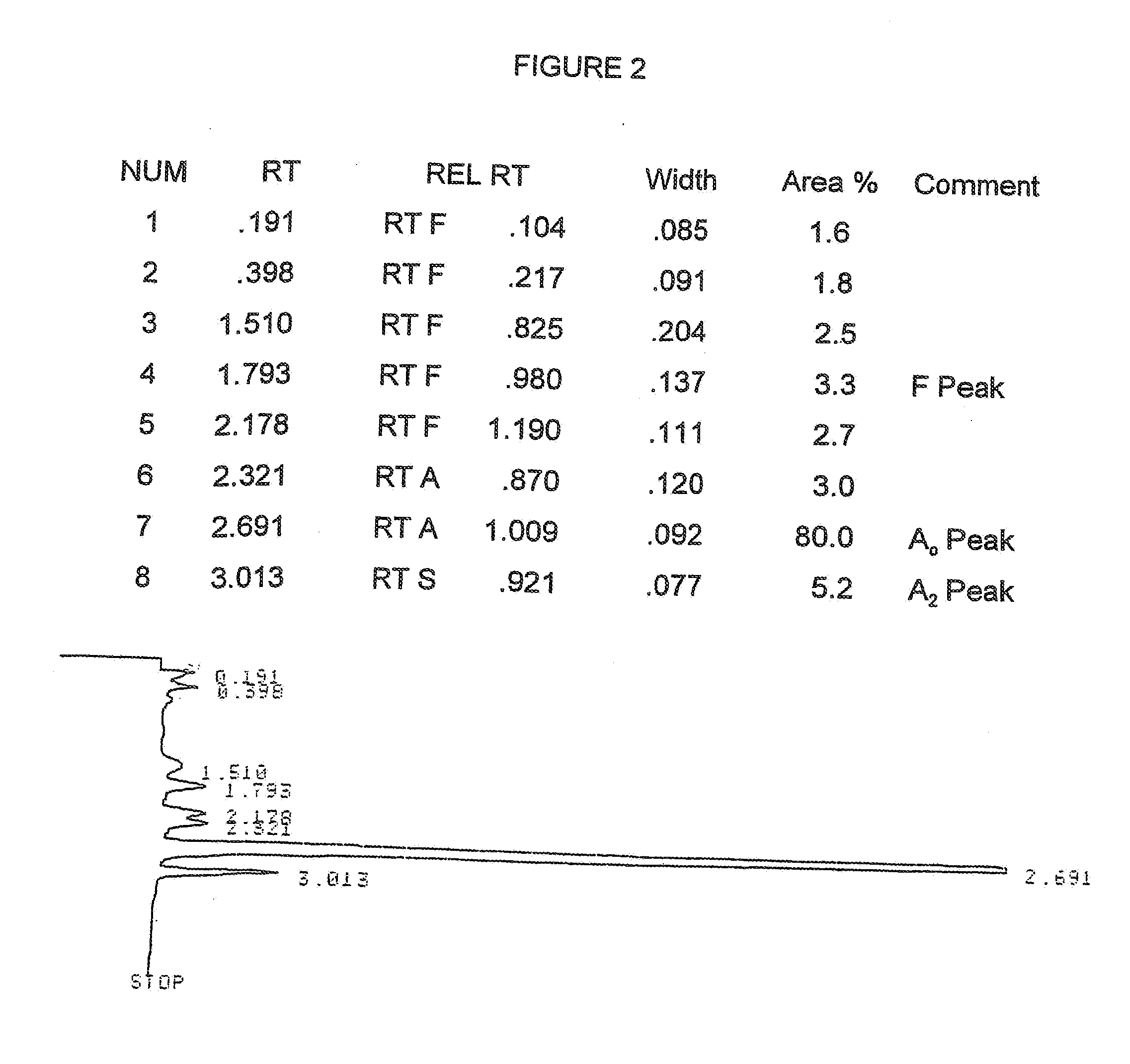High speed chromatographic method for hemoglobin variants screening and quantification of hemoglobins a2 and f
a chromatographic method and variant technology, applied in the field of improved hplc, can solve the problems of lack of computer-assisted analysis, lack of sensitivity required to detect hemoglobins at low concentrations, and hplc methods generally lack the resolution necessary to differentiate some commonly encountered hemoglobin variants, etc., to achieve the effect of reducing ph, reducing ph, and reducing sensitivity
- Summary
- Abstract
- Description
- Claims
- Application Information
AI Technical Summary
Benefits of technology
Problems solved by technology
Method used
Image
Examples
example 1
[0020] Instrumentation. The HPLC unit used in the chromatographic analysis of hemoglobin was the continuous, automated Hewlett Packard 1090 as modified by Primus Corporation and known as the Primus CLC330. This unit included a proportioning valve, a metering pump, a high pressure booster pump, an auto sampler, an auto injector, a photometric detector, dual disc drives, a recording integrator, a temperature-controlled oven, and an HP LUCI controller. However, the analysis can be conducted with any high-quality HPLC system using the appropriate parameters.
[0021] Chemistry. Separation of hemoglobin components took place on a cation exchange column. Specifically, a polyaspartic acid column (3.5 cm×0.46 cm) including a porous silica support having a 5 um particle size and a pore size of 100 nm was used, although many other types of cation exchange columns can be employed. Two mobile phases were used in the HPLC unit. Mobile phase 1 was composed of 10 mM Bis-Tris and 1 mM KCN, and had a ...
example 2
[0031] In this example, a series of quick scan / A2 and F quantitation assays were performed as described above using a different lot of HPLC columns, which were found to have significantly different properties. This necessitated a change in both reagent composition and the non-linear eluant gradients employed. In particular, mobile phase 1 was composed of 20 mM Bis-Tris and 2 mM KCN, and had a pH of 7.0. Mobile phase 2 was composed of 20 mM Bis-Tris, 2 mM KCN and 200 mM NaCl and had a pH of 6.6.
[0032] After start-up was completed, the column was equilibrated over 2 minutes with a mixture of 85% mobile phase 1 and 15% mobile phase 2 at a constant flow rate of 3.0 ml / minute for 0.5 minutes followed by 1.5 minutes at 2.5 ml / minute. Throughout the analysis (i.e., during equilibration and thereafter), the column temperature was maintained at 40° C., and the eluant employed was passed through the column at a constant flow rate of 2.5 ml / minute for the first 2.3 minutes and increasing line...
PUM
| Property | Measurement | Unit |
|---|---|---|
| temperature | aaaaa | aaaaa |
| temperature | aaaaa | aaaaa |
| flow rate | aaaaa | aaaaa |
Abstract
Description
Claims
Application Information
 Login to View More
Login to View More - R&D
- Intellectual Property
- Life Sciences
- Materials
- Tech Scout
- Unparalleled Data Quality
- Higher Quality Content
- 60% Fewer Hallucinations
Browse by: Latest US Patents, China's latest patents, Technical Efficacy Thesaurus, Application Domain, Technology Topic, Popular Technical Reports.
© 2025 PatSnap. All rights reserved.Legal|Privacy policy|Modern Slavery Act Transparency Statement|Sitemap|About US| Contact US: help@patsnap.com


